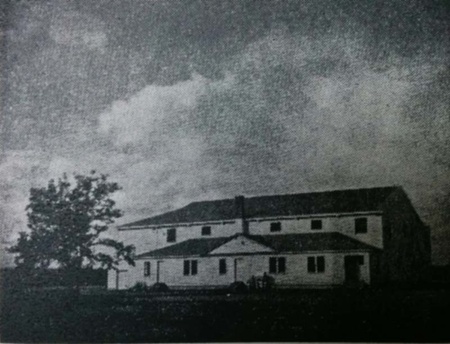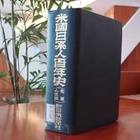Japanese people from railway work
Idaho, bordering Montana to the east and Washington and Oregon to the west, is a region that began with mining as part of the westward development, and later saw the railroad industry flourish. The high plains were also a major agricultural region.
According to the "Centennial History," the history of Japanese people in Idaho begins in detail with railroad work.
The first Japanese people set foot in Idaho in 1891 (Meiji 24), when the first Japanese workers were sent to Nampa to work on the Huntington-Granger section of the Oregon Short Line Railroad, which was then being constructed as part of the UP (Union Pacific) Railroad.
However, it is said that there was a Japanese presence even before this. It was a woman.
"From about 1885 to the 1890s, a large number of Japanese prostitutes traveled by bicycle across hundreds of miles of mountains and fields, entering the mountainous areas where not a trace of a Japanese could be found, and barricading themselves in the red-light districts, actively catering to white and Chinese workers." The Centennial History does not say where these women came from.
The princely boss, Chushichi Tanaka
Japanese railroad workers were sent to Japan under contract with the railroad companies by Japanese bosses, and one famous man who was the originator of this labor brokerage business was Chushichi Tanaka, about whom there is also a vivid account.
"Even the circumstances of the early immigration period can be seen from the fact that Tanaka Chushichi first signed a contract with the railroad company labor supervisor known as Remington, when Tanaka's wife, who worked as a prostitute, became Remington's mistress. This led to the employment of Japanese in Idaho on railroad construction, and Tanaka's headquarters was later moved from Nampa to Pocatello. Tanaka gave the order to about 300 Japanese workers, forcing them to dig a pond in the garden, and his extravagance was said to rival that of royalty. He also established a hospital, which was the precursor to the Japanese Hospital that later made a great contribution to the care of injured and sick Japanese in Pocatello."
The involvement of Japanese people in agriculture in this area began when the Idaho Sugar Company took action after being persuaded by Hajime Nishiyama, a railroad boss with his headquarters in Rock Springs, Wyoming.
As a result, over 100 Japanese workers were dispatched by the San Francisco-based Nippon Kangyo-sha (President Hisataro Abiko) in 1903. Some of these Japanese settled in the area, worked in agriculture, and built the foundations of Japanese plantations.
Japanese Community Center Construction
Japanese agricultural associations were also formed in various places. Organized movements against anti-Japanese sentiment were also carried out. Since 1923, neighboring states have implemented anti-Japanese land laws that did not recognize Japanese land ownership and restricted land lease rights, but Idaho was the only state that fought alone. However, in the end, the Japanese gave up the struggle for land ownership and succeeded in securing land lease rights.
The number of Japanese in Idaho was 1,291 in 1900, 1,569 in 1920, and then decreased to 1,191 in 1940. However, by 1960, the number had risen to 2,254. The postwar increase was due to the large number of people who were evicted or relocated from other regions due to the war and settled there.
The Centennial History explains the area as divided into the Eastern Idaho region, the Southern Idaho region, and the Aichio region. Since Idaho is written as "Aishu" in kanji and Oregon is written as "Chuoshu," the Aichio region refers to the southwestern part of Idaho and part of Oregon.
In this area, the Japanese Community Center was established in December 1938. A few years before that, "in 1933, with the completion of the Owahi Reservoir, sugar company factories were built in Nampa and Nessa, and the number of Japanese sugar beet farmers increased. Lettuce cultivation also began, and large amounts of anions, potatoes, celery, lettuce, and eastern shipping also increased."
"Meanwhile, as the second generation grew up at home, after much deliberation among the knowledgeable people of the time, a large youth center was built in order to raise worthy successors who would not be held back by racial prejudice. This is the current Aio Japanese Community Center."
Upon completion, a grand opening ceremony was held, and the author of this column in the Centennial History has an interesting comment to make.
"The hall, which was built with such painstaking effort, is nothing less than an expression of the love that the first generation felt for young men and women, but with time our sense of gratitude is fading."

A Japanese man praised for his taxidermy skills
The book introduces many Issei who have been active in Idaho. Here is one example.
The farmer is Hori Seitaro (Niigata Prefecture).
Mr. Hori was born in 1883 in Shibata, Kitakanbara County, Niigata Prefecture, to a family of Mizoguchi clan elders. He immigrated to Hawaii as a contract immigrant in 1898, but moved to San Francisco in 1906. With the help of the Japan Industrial Association, he started working as a laborer at the Idaho Halls Sugar Beet Farm in Idaho, and later ran the farm, becoming one of the pioneers of potato cultivation in the area.
While he owned land, he also took advantage of the dexterity that is unique to the Japanese, and learned taxidermy techniques from the Germans in the area, becoming famous among Americans. His skills were so highly valued that he "left an immortal name in the American world for his excellent skills, even accompanying wild animal hunters in Africa."
Here too, the Japanese have survived using a variety of technologies and wisdom.
(Note: We have used the original text as much as possible in the quotations, but have made some corrections. In addition, we have based the names of places on the way they are written in the "Centennial History." Please note that even in places where expressions are no longer used today for human rights reasons, we have used the expressions from that time as they were.)
*The next issue will be " Japanese Americans in Washington State ."
© 2014 Ryusuke Kawai






